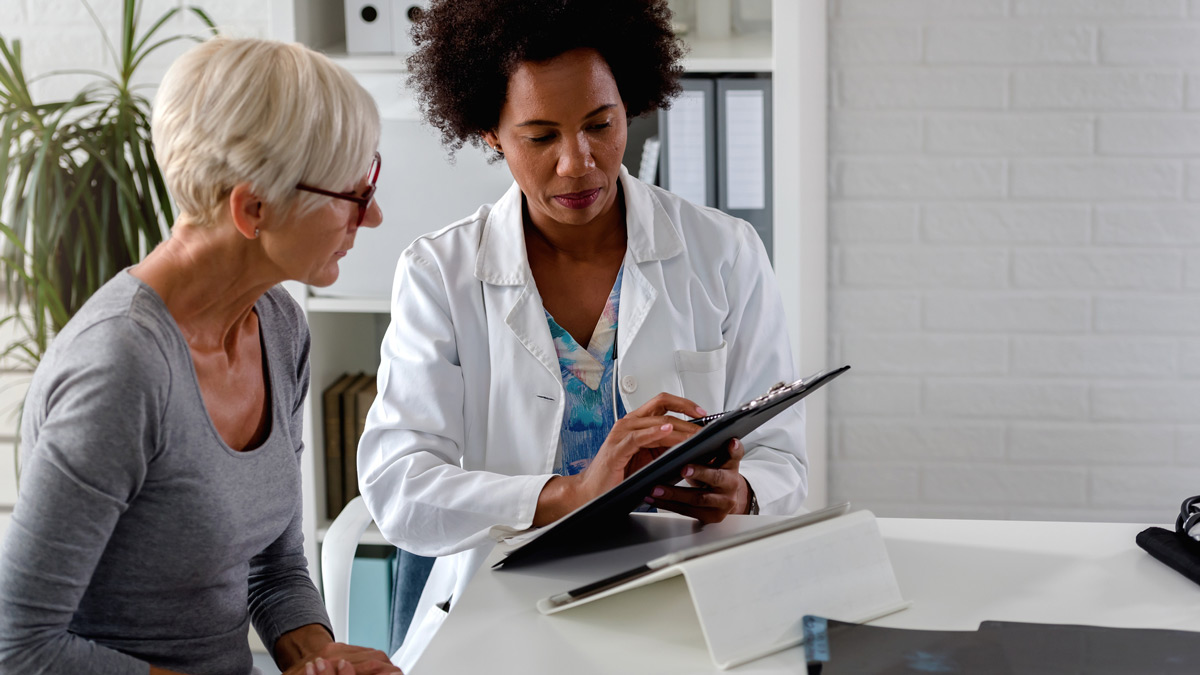Clinical decision-making insights for haematologists and oncologists

Clinical trial readouts continue to emerge despite countries’ lockdown policies, providing several decision-making challenges for healthcare professionals such as haematologists and oncologists – also known as haem/oncs.
pharmaphorum’s Behavioural insights into haem/onc clinical decision making webinar, in association with Medscape, showed that this can negatively impact physicians’ confidence as they try and keep on top of information about an array of treatment options.
The webinar discussed findings of exclusive surveys showing the continuing medical education (CME) needs of doctors and shone a light on where physicians are going for their learning needs amid the COVID-19 pandemic.
The webinar also showed the enormous task facing haem/oncs, who have to keep abreast of complicated developments as a plethora of new treatments become approved.
While these new treatments have the potential to change standards in care for many patients, there can be challenging side-effects, which haem/oncs must be aware of to make the best prescribing decisions for individual patients.
Challenges for community-based haem/oncs
The considerable progress made in the field poses its own challenges as there is a vast amount of clinical trial data to navigate and learn from.
A seemingly constant flow of new medicines, as well as new insights into established therapies, mean that haem/oncs have their work cut out to keep up with the latest developments.
Professor Mohamad Mohty, head of haematology and cellular therapy at Saint-Antoine Hospital, told the webinar audience: “It is really amazing to see the number of haematology indications, whether for new molecular entities or for biosimilars.”
He noted that the progress with new medicines has also translated into improved survival rates, with an improvement in five-year survival for leukaemia.
Data from the US cited during the webinar showed a five-year survival rate of 34.2% for leukaemia in the period 1970-77, increasing to a rate of 60.6% for the period from 2007-2013.
Diving deeper into data from Germany, the largest improvements have been seen in multiple myeloma and non-Hodgkin lymphoma, Mohty noted in his presentation.
He added: “The availability of a novel drug or several novel drugs in a given cancer, in a given disease is the key driver for the improved outcomes.”
But progress is creating its own challenges, together with the obvious impact of COVID-19.
Aside from the pandemic, haem/oncs face pressure on several fronts: from making optimal treatment decisions, from patients and from the limited time they have for balancing their clinical practice and ongoing study.
Community-based haem/oncs see a variety of patients with different tumours in this increasingly complex treatment landscape, while also having to deal with the changes to practice caused by COVID-19.
Complexities of care
The increasing number of approved therapies has led to a potentially overwhelming choice of combinations in blood cancer, each with their own advantages and disadvantages.
Katie Lucero, director of outcomes and insights at Medscape Education, outlined eight different therapy combinations that could be applied to one multiple myeloma case study.
The findings of a Medscape survey of 119 treating haem/oncs in Europe revealed that the multitude of different choices are causing physicians to lack confidence, she explained.
In the best case, 43% of those questioned were confident with a particular treatment choice, but in the worst case only 6% were confident with one of the options available.
Further analysis from the survey showed that a sizeable minority of haem/oncs (21%) were misinformed about the correct treatment choice for another case study, which involved a multiple myeloma patient presenting with severe peripheral neuropathy.
Lucero pointed out that this group of haem/oncs were confident about keeping patients on a treatment, even though it was likely causing the side-effect.
She argued that the survey shows that there is a need to increase the number of haem/oncs who have achieved mastery in making treatment choices.
Only 15% of the haem/oncs surveyed were found to have achieved mastery, a figure she said is “quite low”.
She added: “What's concerning is the 21% who are misinformed, feeling confident but keeping the patient on a treatment that is linked to the adverse event they are experiencing.”
How to improve levels of mastery
Victoria Harvey-Jones, associate director of clinical strategy, medical education at Medscape Oncology, gave insights into the educational strategies that can be used to attain mastery.
She said: “It's important to build foundational knowledge first, whether that be awareness of the different modes of action of novel therapies or the multitude of clinical data. Then we move on to understanding the clinical implications.”
It is also essential to understand what motivates haem/oncs to consume education, she added, so that materials meet their needs.
Half of 74 haem/oncs surveyed by Medscape said that they were motivated by a need to learn about the latest developments on a topic.
Of those questioned, 23% listed a personal interest in a topic as a motivation, while only 13% were motivated to learn when they were looking for an answer to a specific question.
Commenting on the findings, Mohty stressed the importance of continuous education as a way of encouraging haem/oncs to attain mastery, so as many haem/oncs as possible maximise their prescribing skills.
“I think we need to put everybody on track moving in the same direction,” he said.
Building knowledge and confidence with digital education
All this comes at a time when COVID-19 has made attending medical conferences and seminars in person impractical because of social distancing regulations.
A CE Outcomes survey showed that 49% of physicians do not expect to attend live meetings for at least six months, although 66% expect to attend an online version of a national meeting.
The survey showed that 65% of physicians expect to shift participation from live to online education. A separate study by McKinsey conducted in April this year also revealed that 90% expect to engage more with remote learning tools after the COVID-19 crisis.
Mohty argued that this has implications for pharma companies who are producing the research data on behalf of the medical community, in terms of the educational strategies they adopt to keep physicians up to speed with the latest developments.
He said: “They do have a responsibility towards educating healthcare professionals on the correct use of their drugs.”
Industry has recognised the need to shift to digital education, according to Harvey-Jones, who showed that leading pharma companies expect more digital activity because of the pandemic.
This was backed with additional research by Medscape, which showed digital education could reduce inappropriate use of fluoroquinolones in acute bacterial sinusitis, acute bronchitis in COPD, and uncomplicated urinary tract infections.
That study, conducted in partnership with the FDA, concluded that digital CME and targeted short form messages reduced prescription of the drug, positively impacting clinical behaviour and public health.
Mohty said: “I think the Medscape FDA results are a wonderful example of how you can positively impact a given field, and I think we should really move in this direction.”
Digital education is here to stay
During these difficult and unusual times, physicians must be prepared to adapt and change, something that is particularly true of haem/oncs where the need for CME support is immense because of the high level of innovation.
The new set of tools provided by digital education can build on the foundational information from medical journals and give doctors an insight into the latest practice-changing developments as they arise.
This will allow patients and society to feel the influence of the revolutionary new treatments that are available, despite the disruption caused by the pandemic.
As nearly all major conferences are being held online because of social distancing rules physicians have had to quickly get used to getting the latest medical education remotely.
Almost overnight virtual networking has become the norm, and for practical tasks doctors can improve their skills through digital simulations.
The increasing use of digital information will help to inform doctors who can’t attend medical conferences because of a hectic work schedule, or perhaps can’t afford the substantial travel and accommodation expenses.
As Mohty said: “Even if COVID disappears, which hopefully will happen very soon, we are going to restructure our lives. I simply think that digital CME is now here to stay, and it will continue to grow.”
Watch the Behavioural insights into haem/onc clinical decision making webinar in full.












